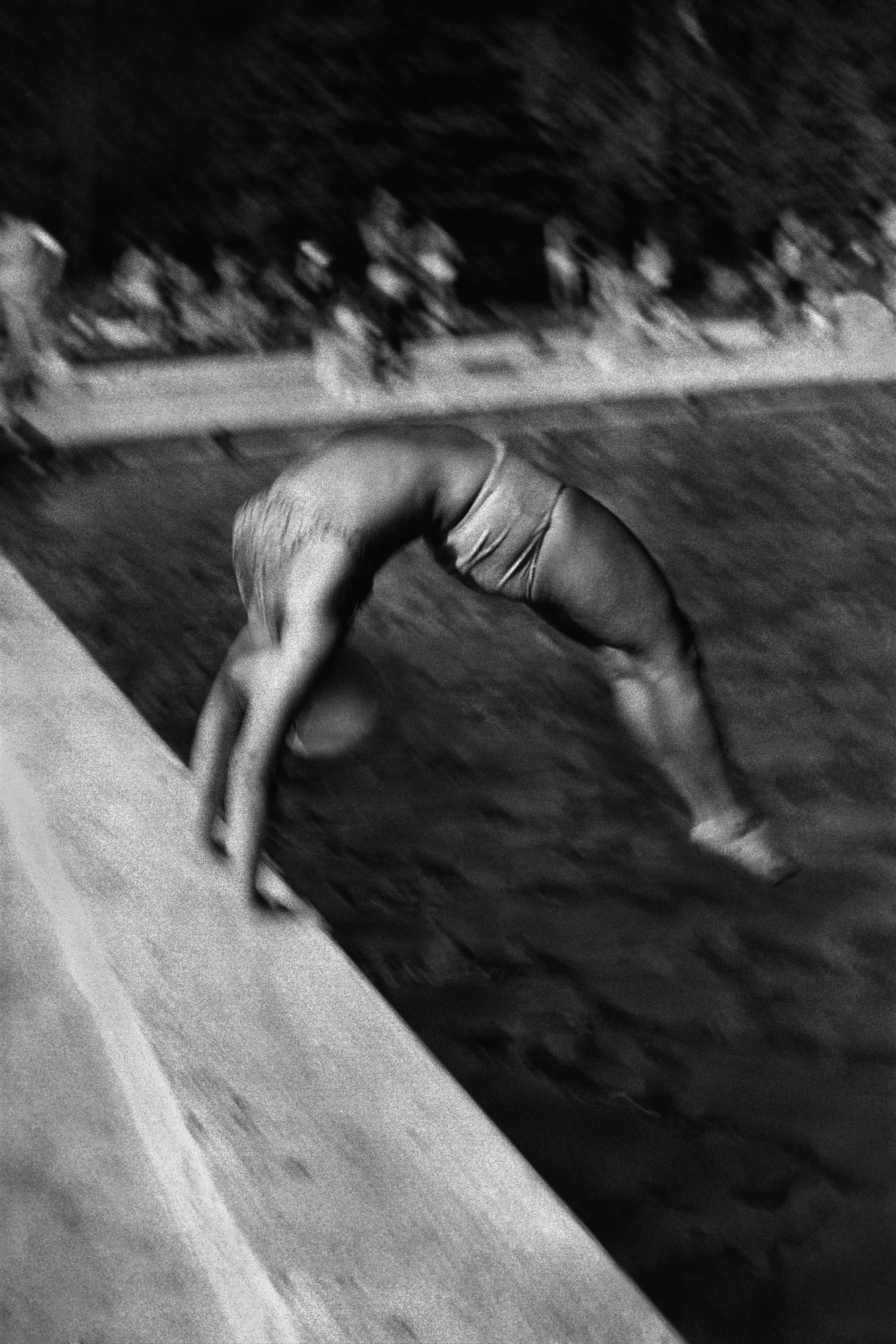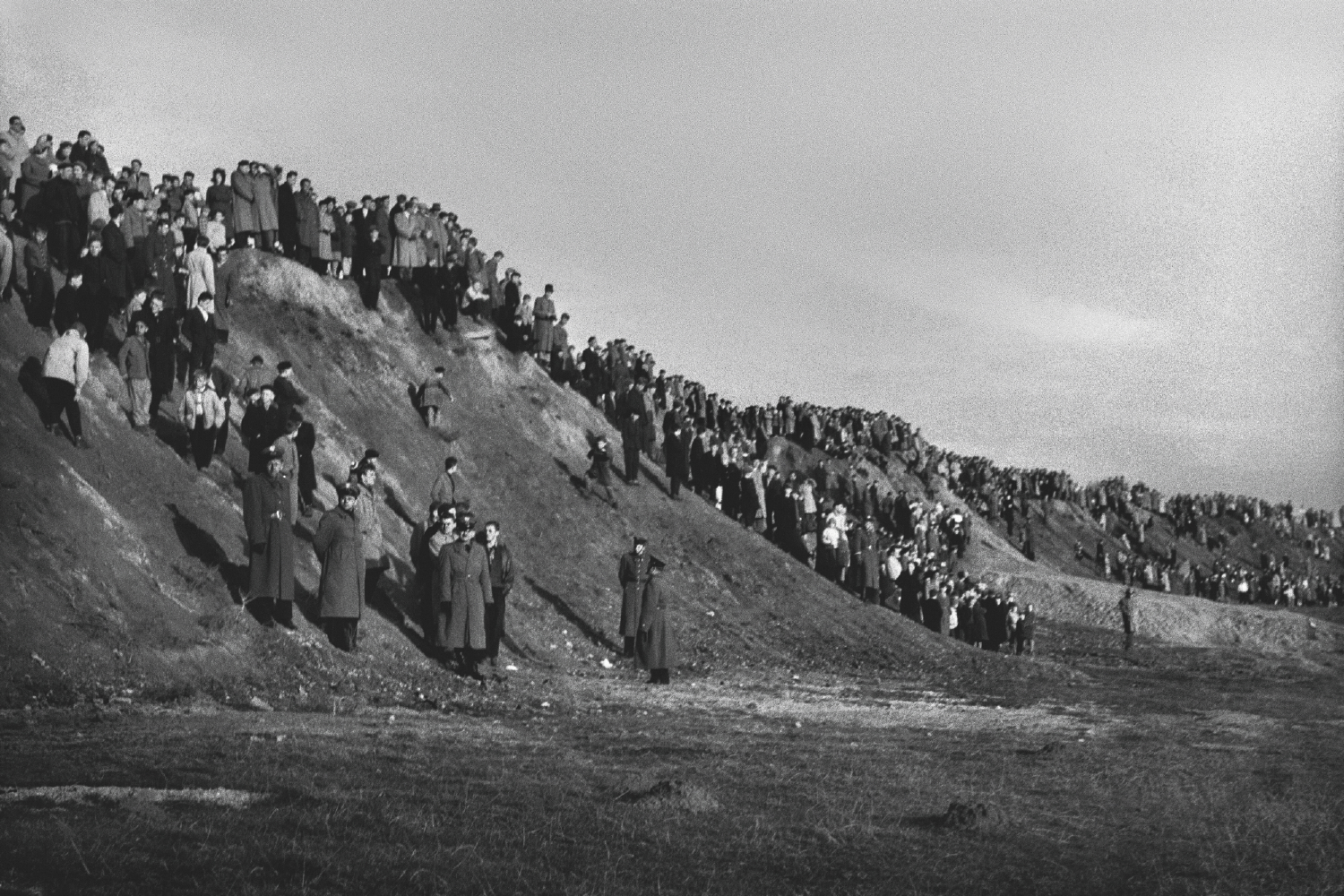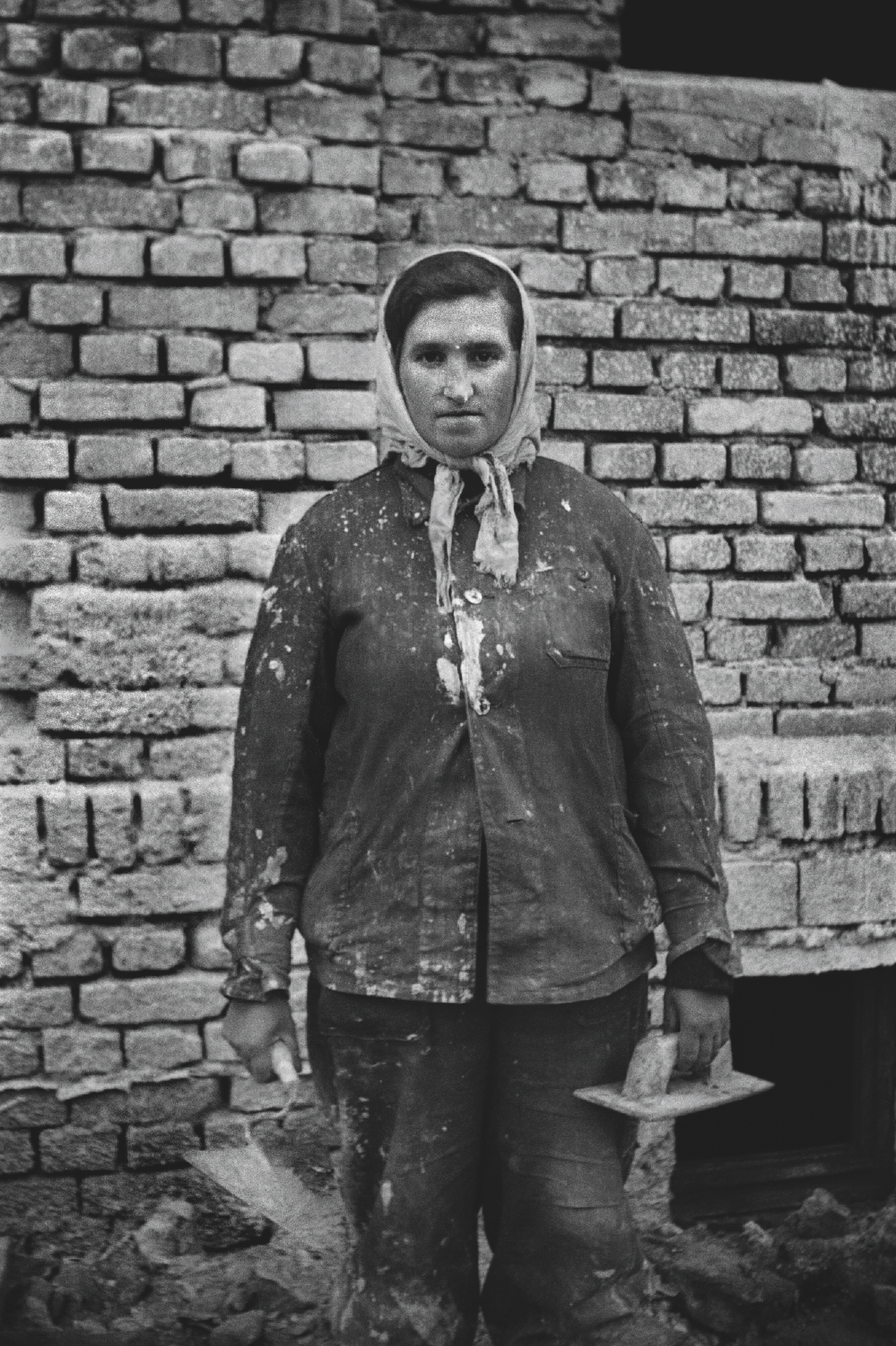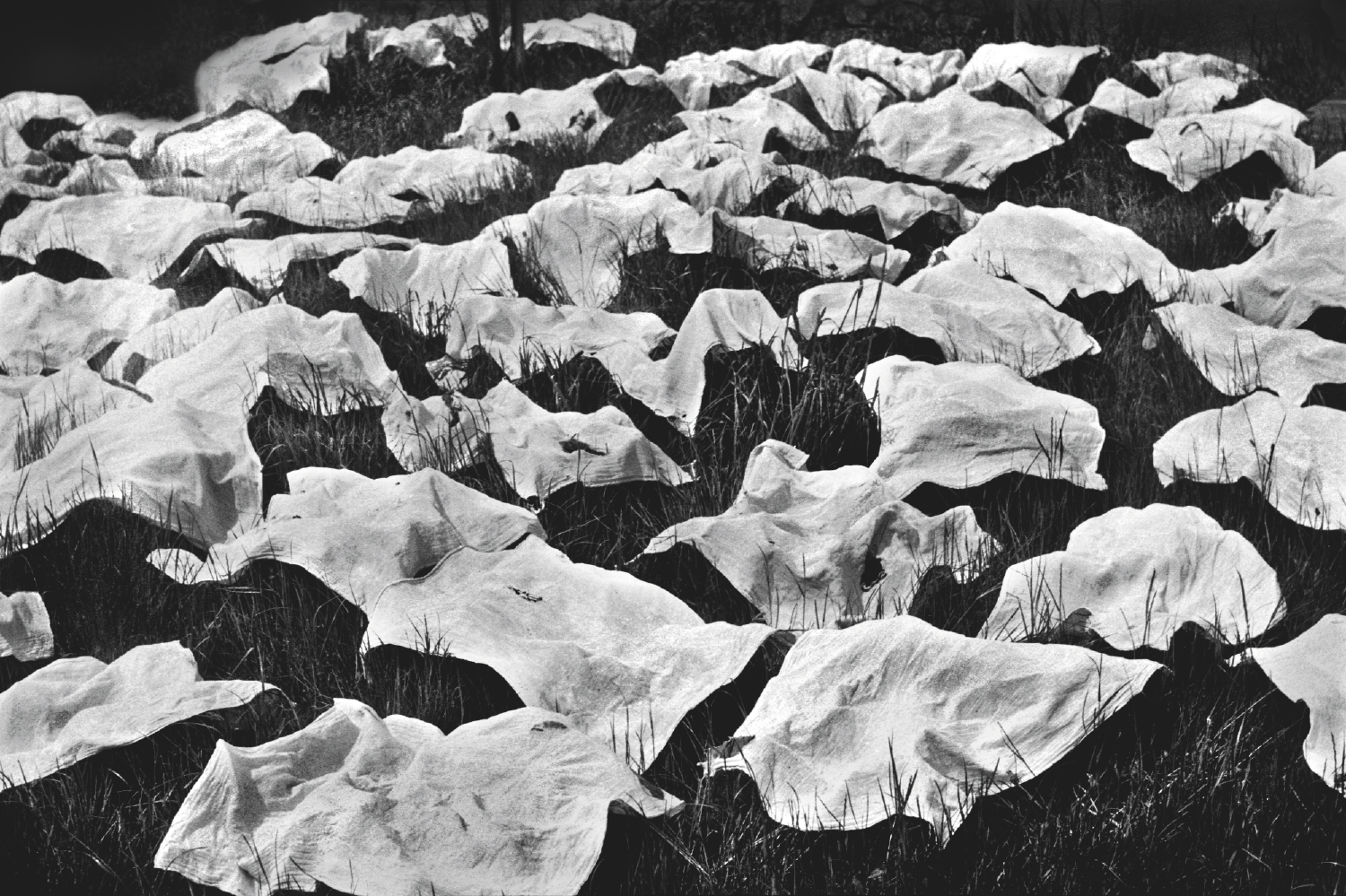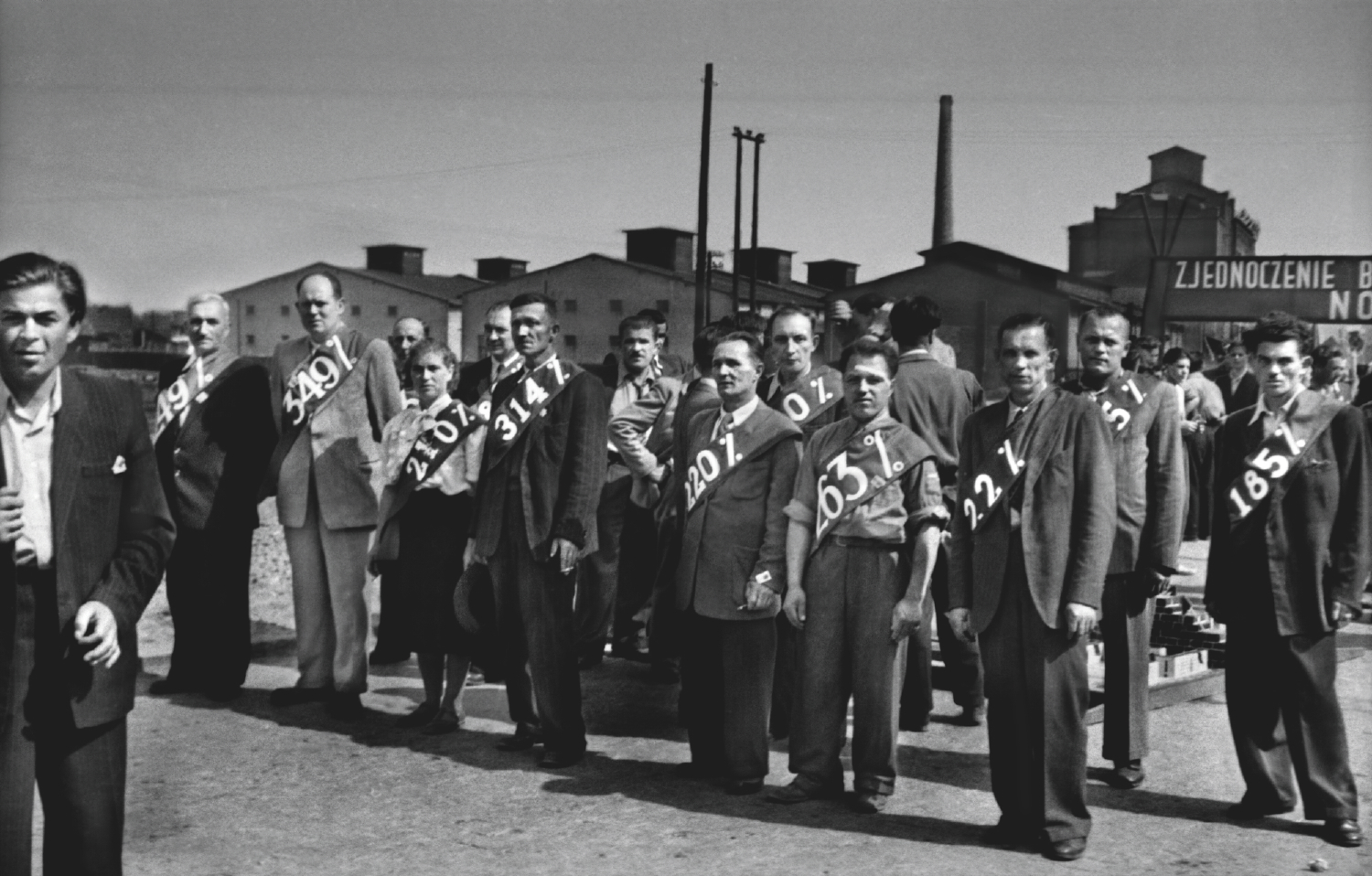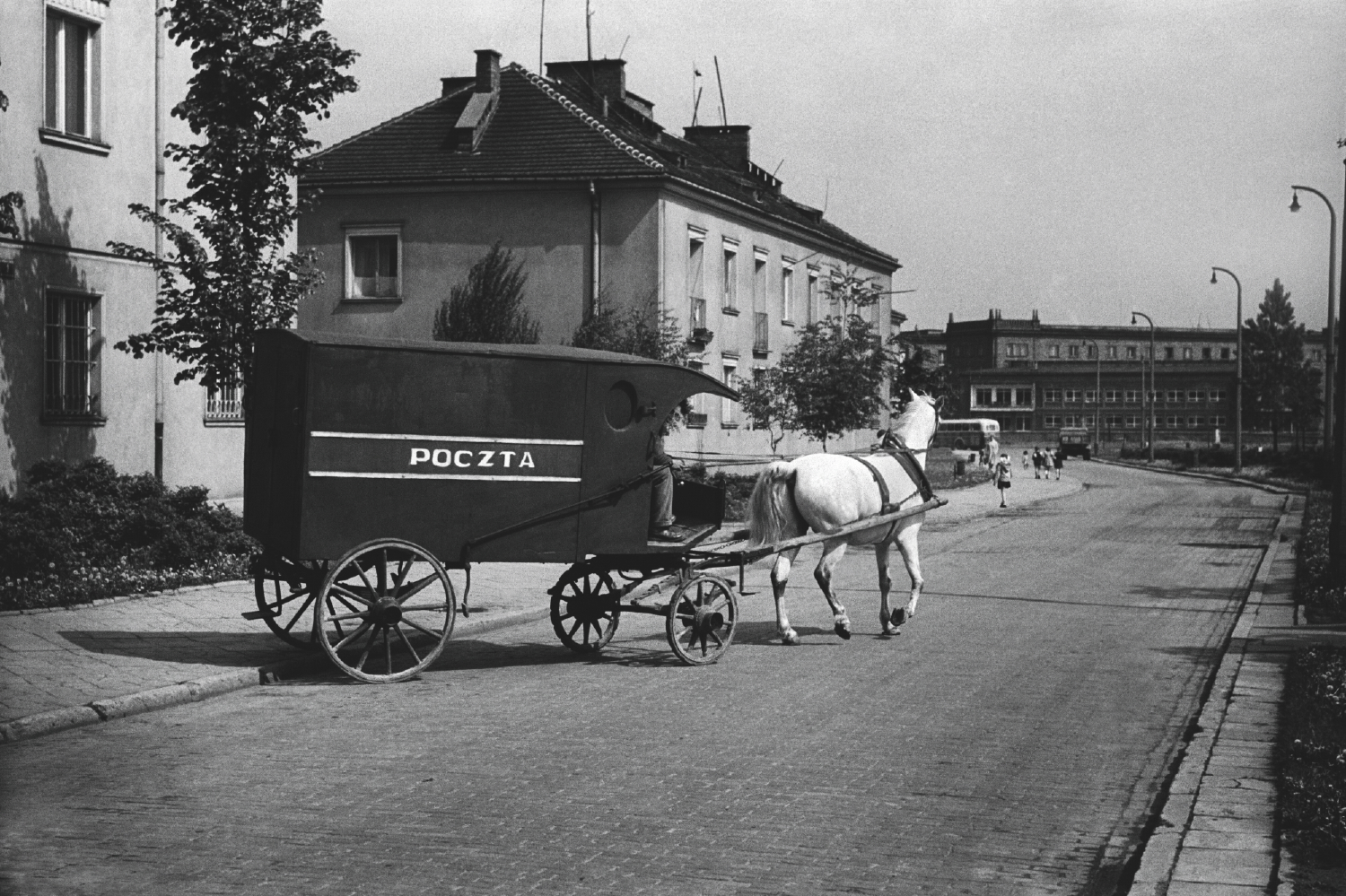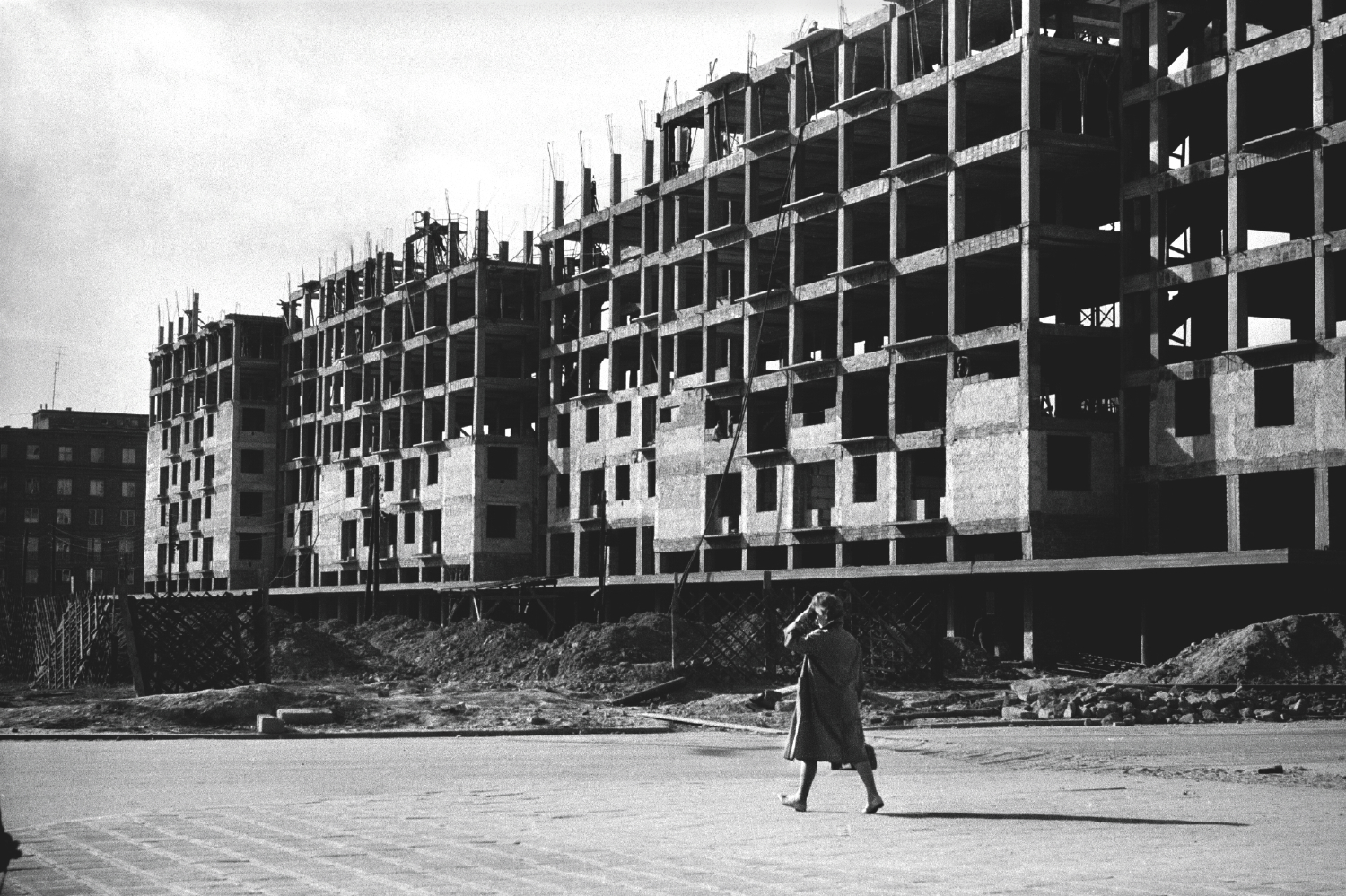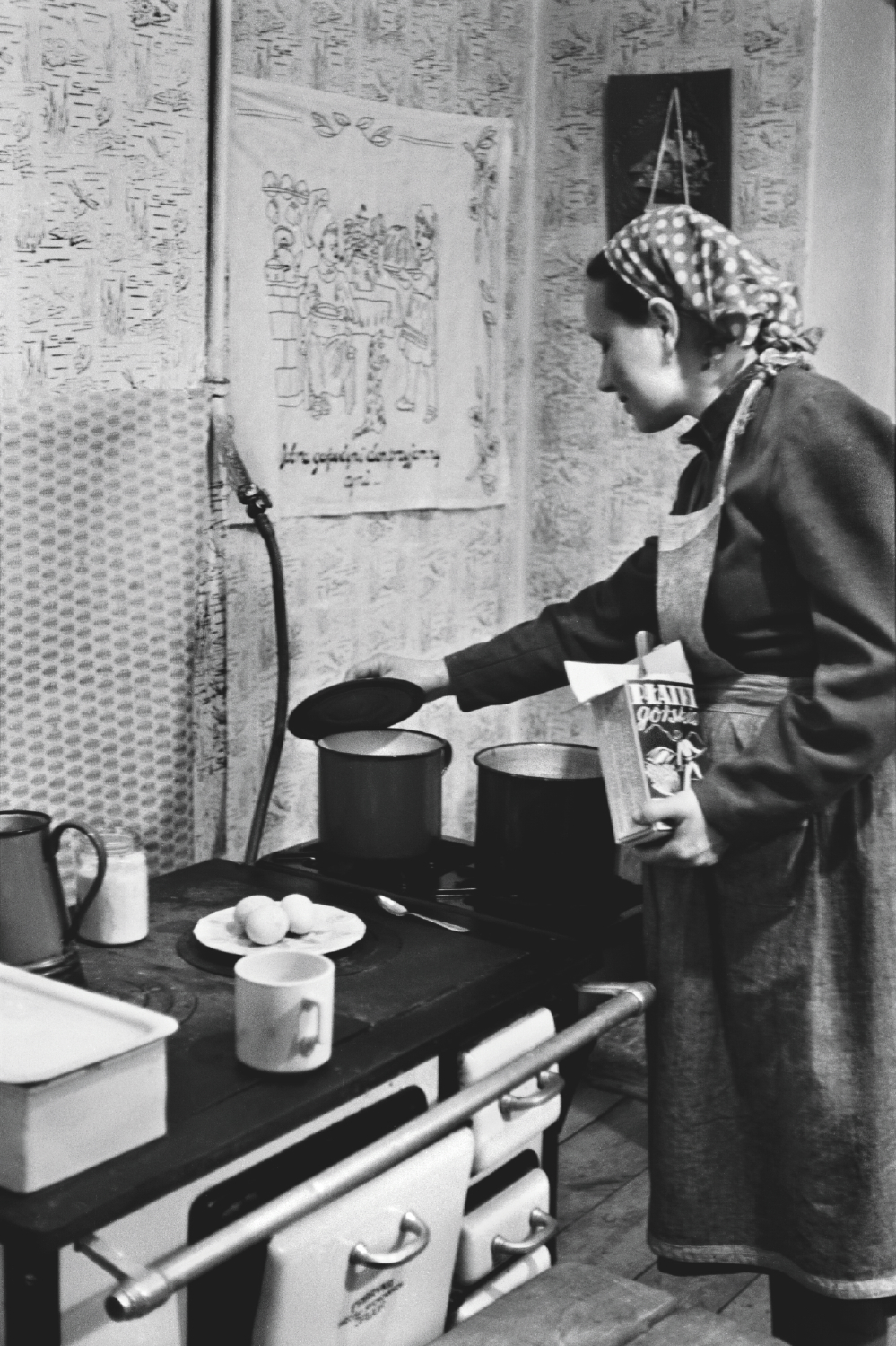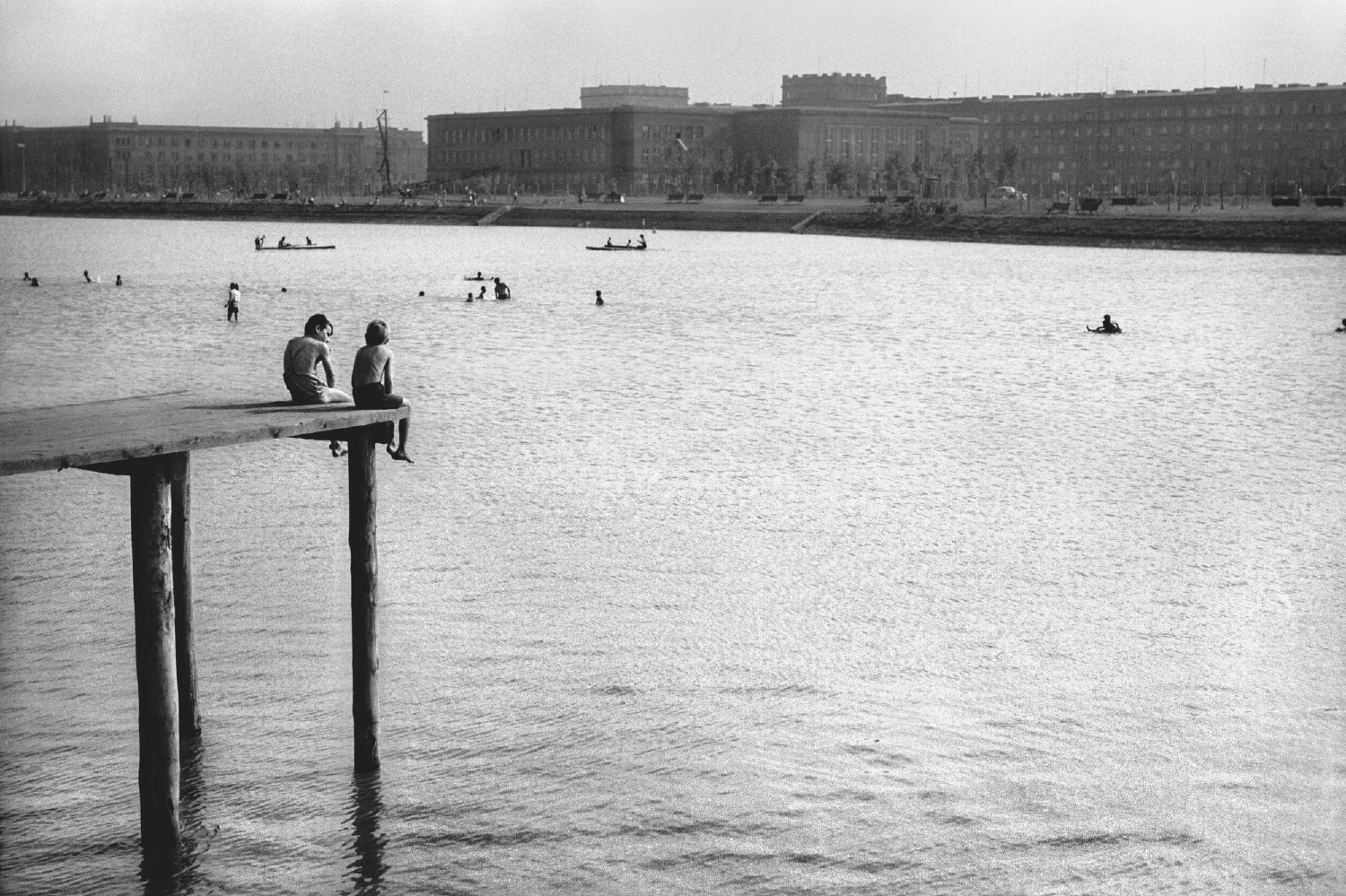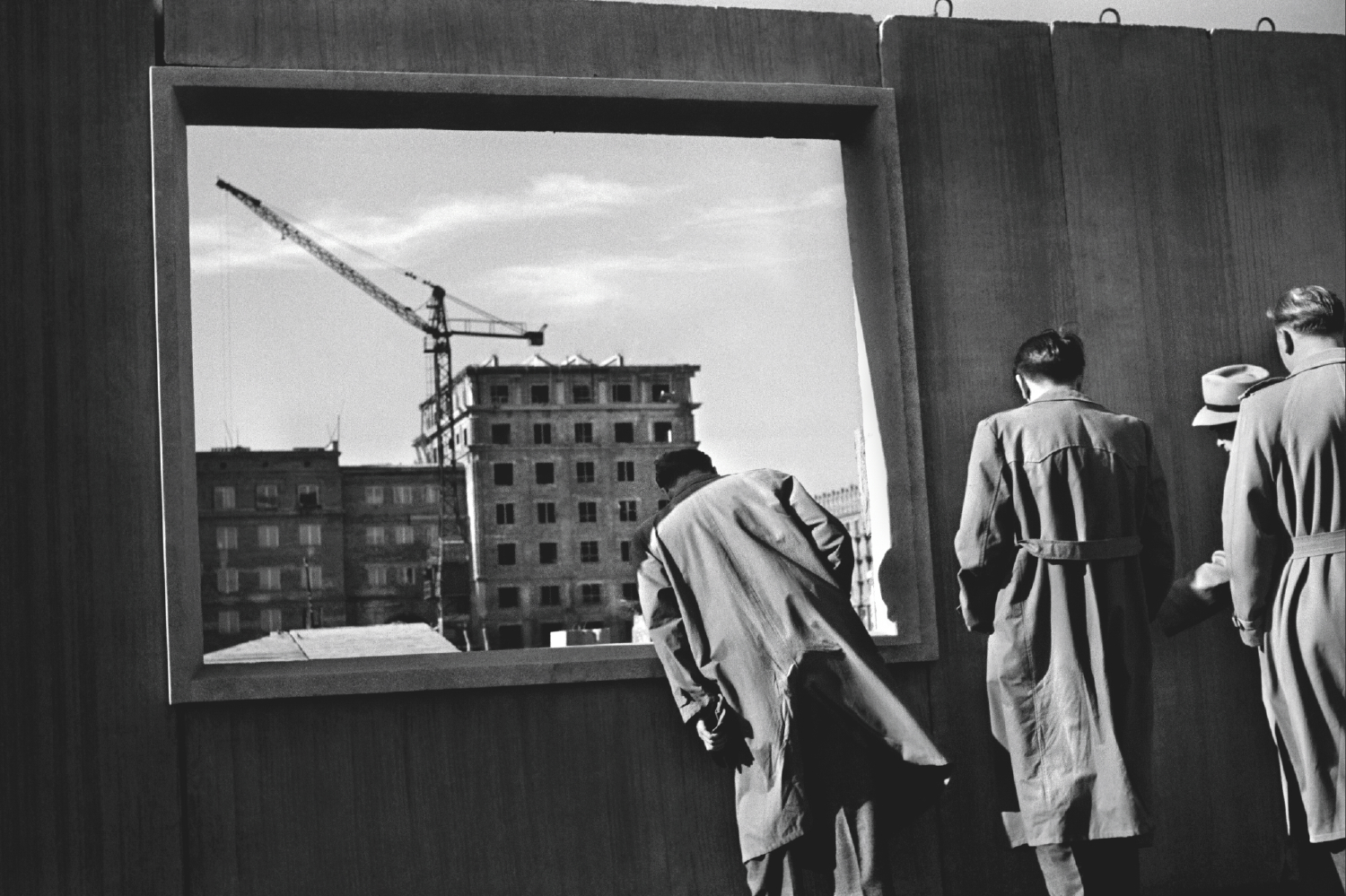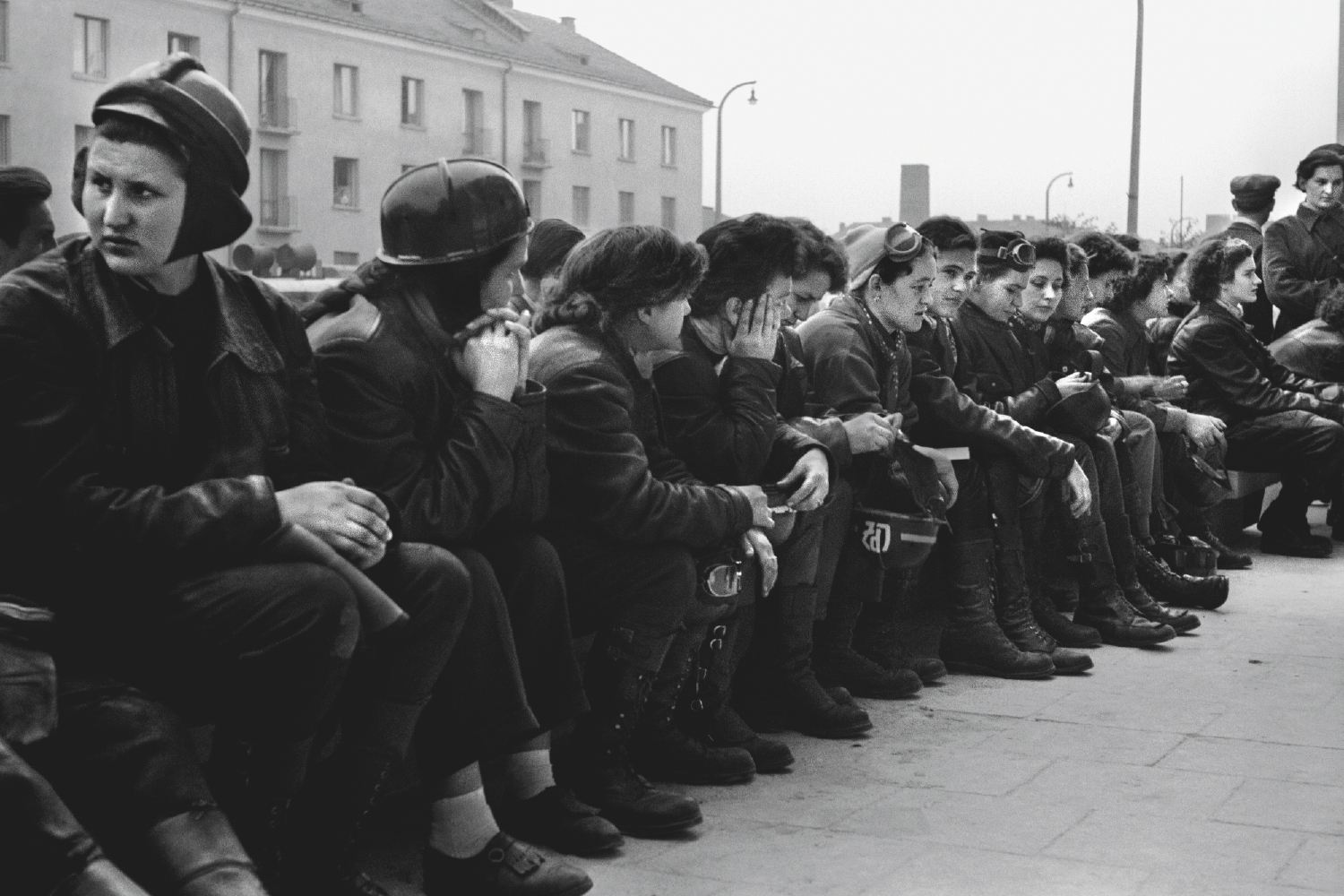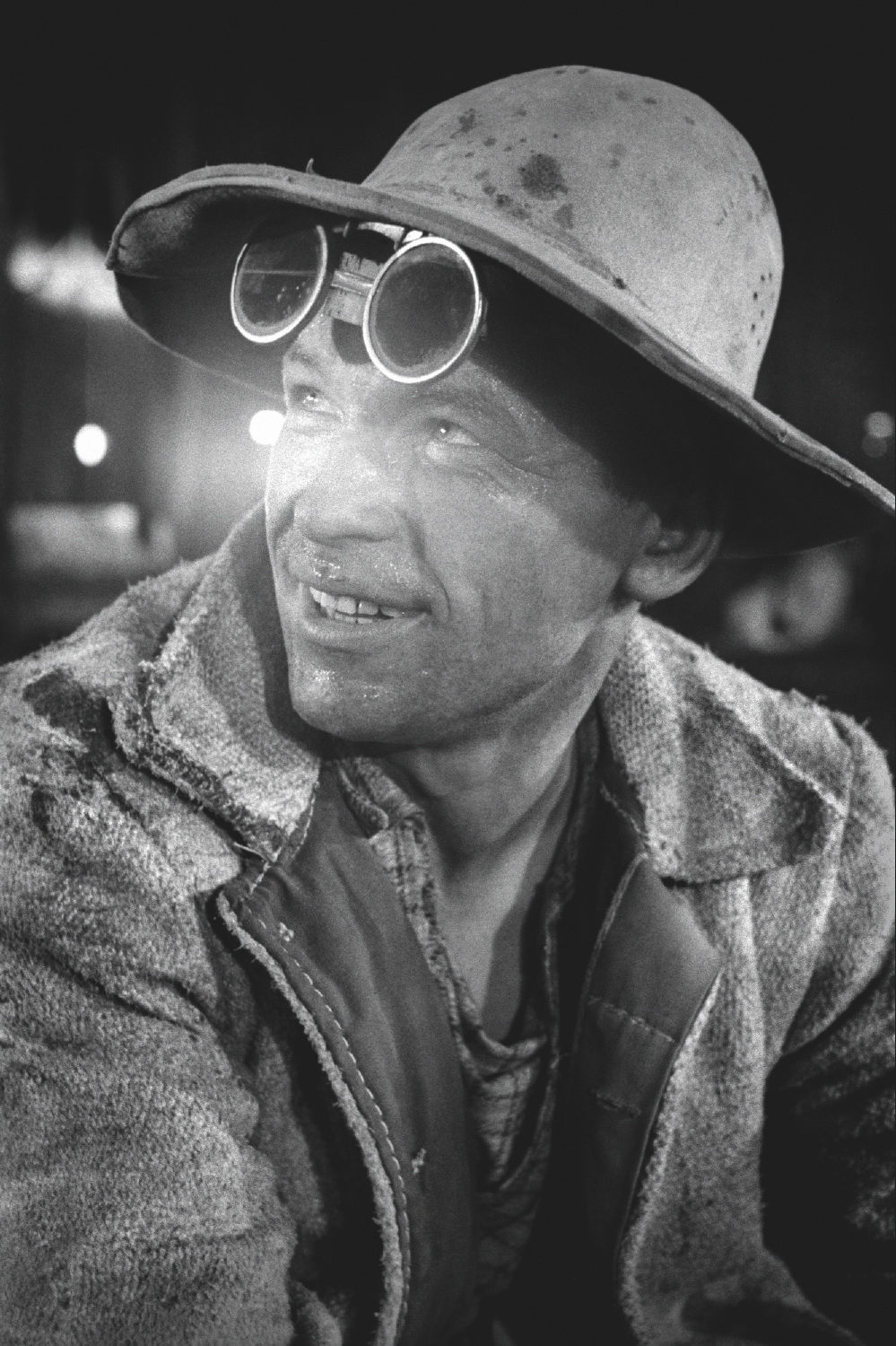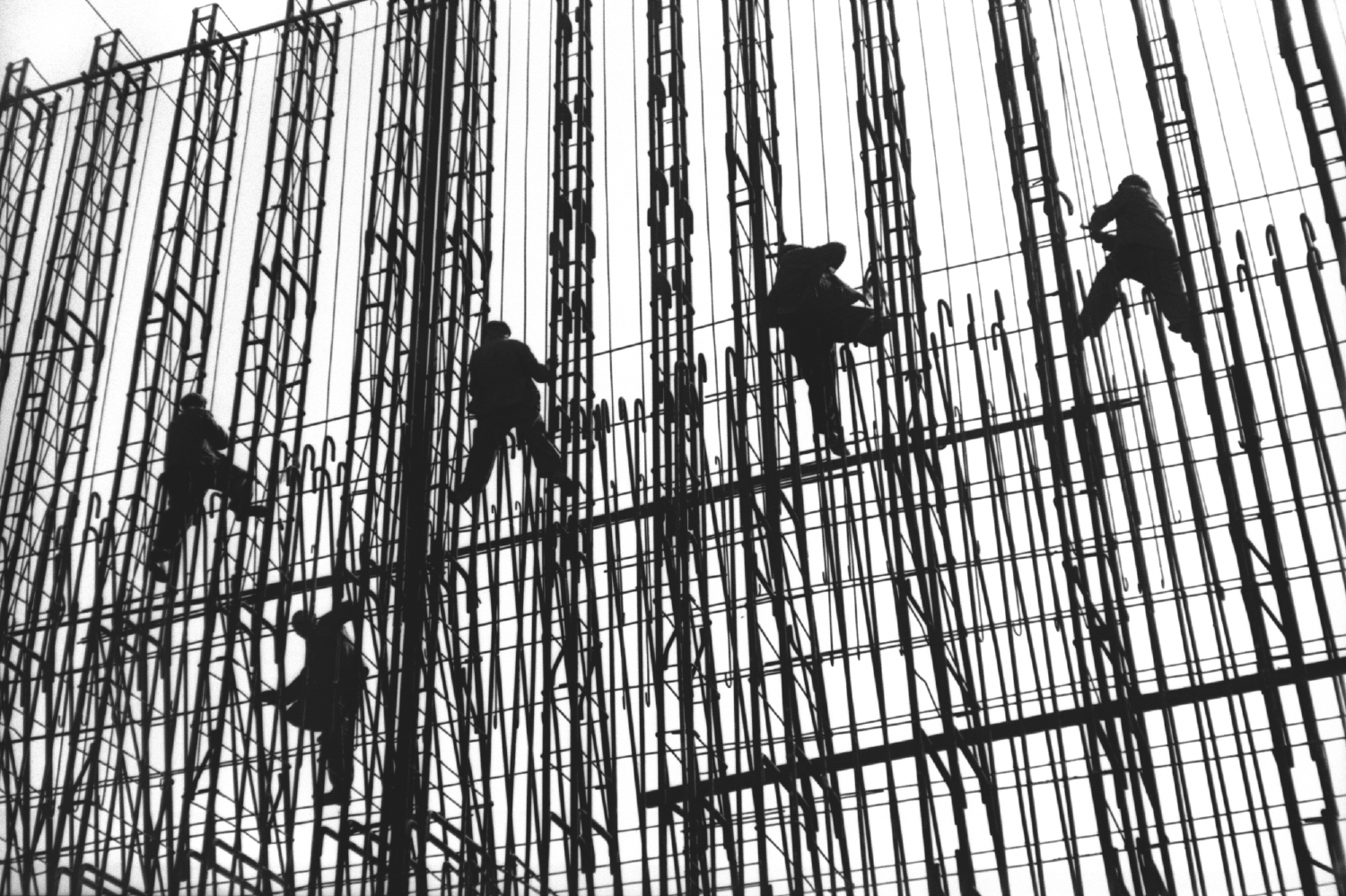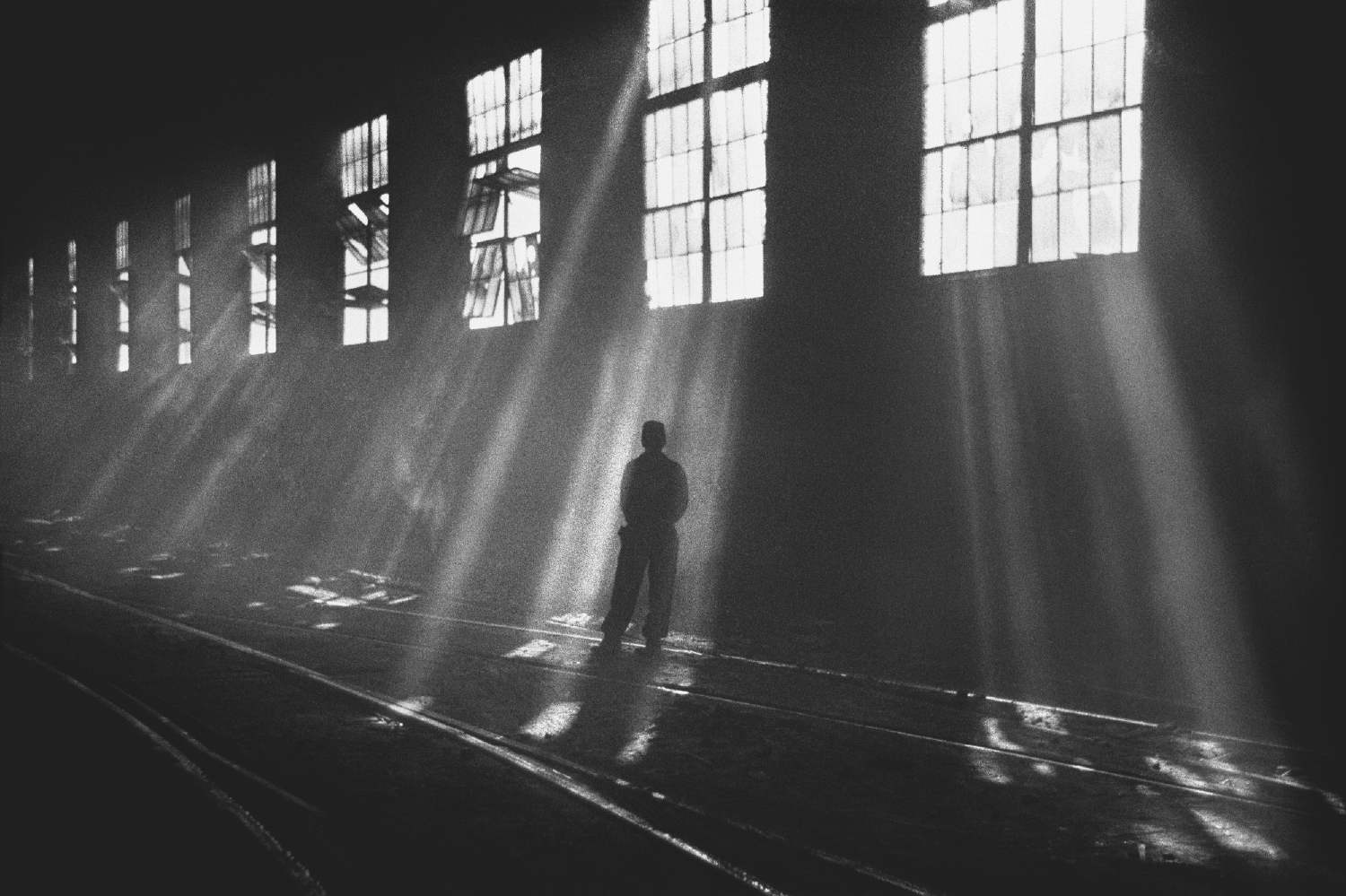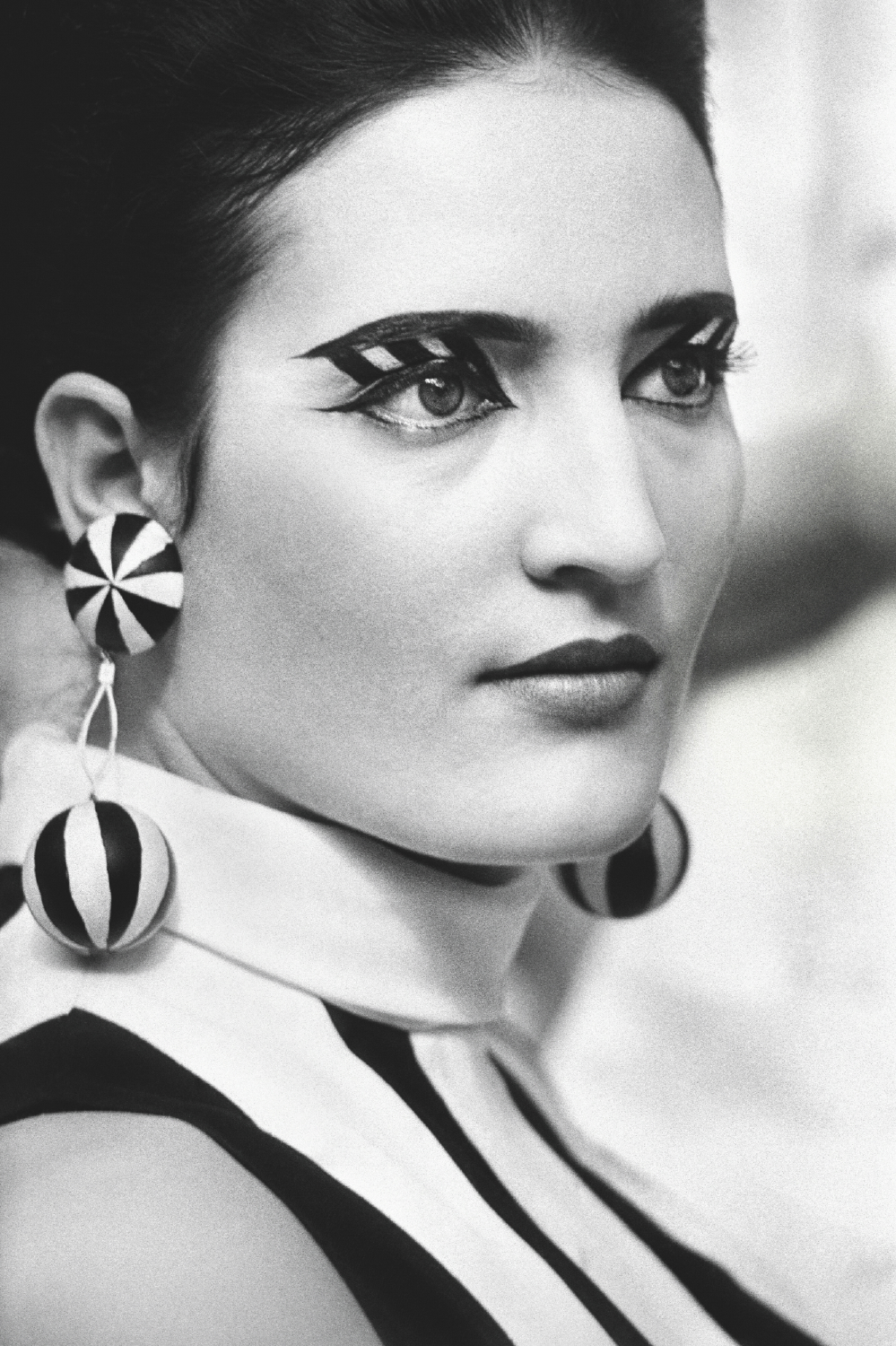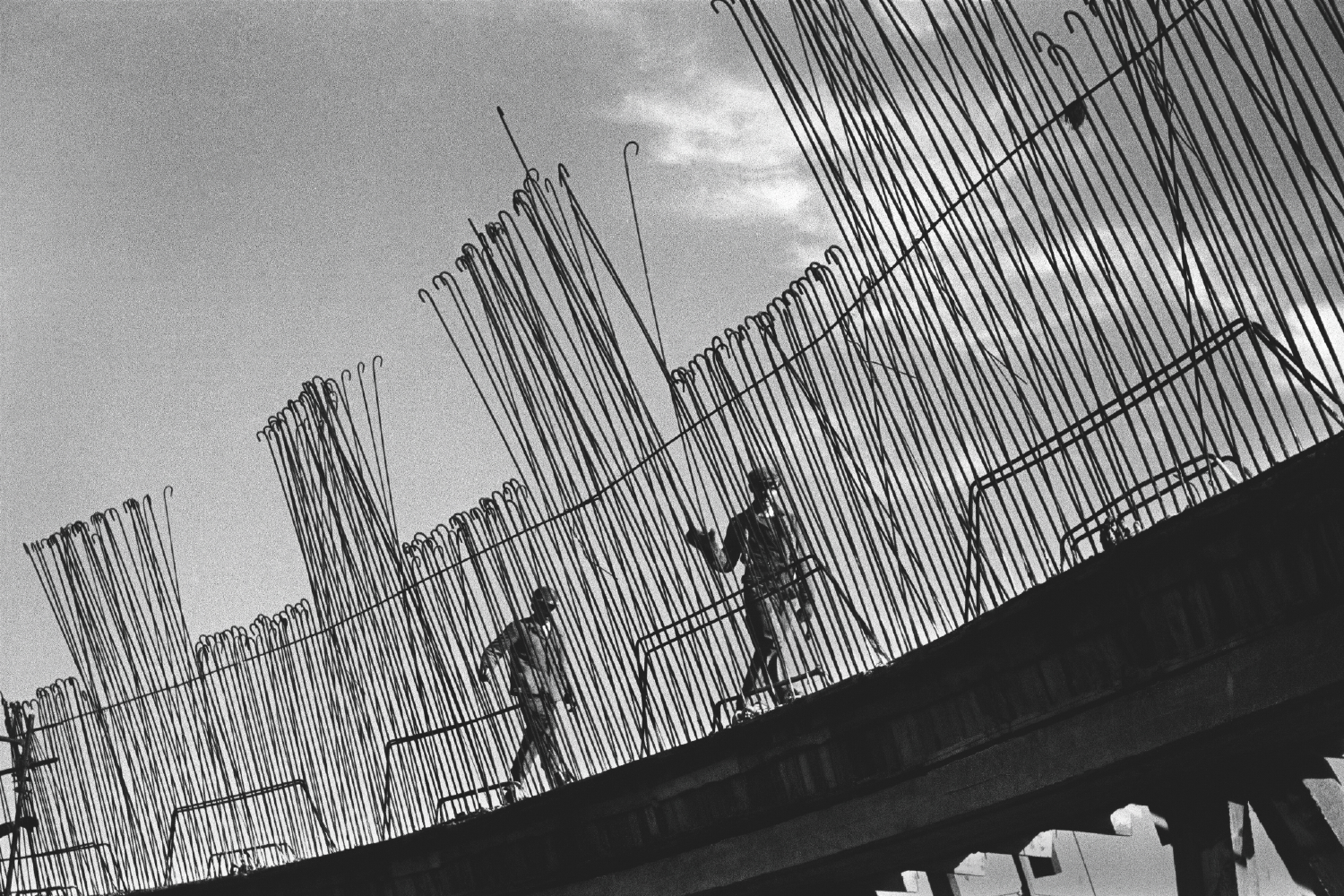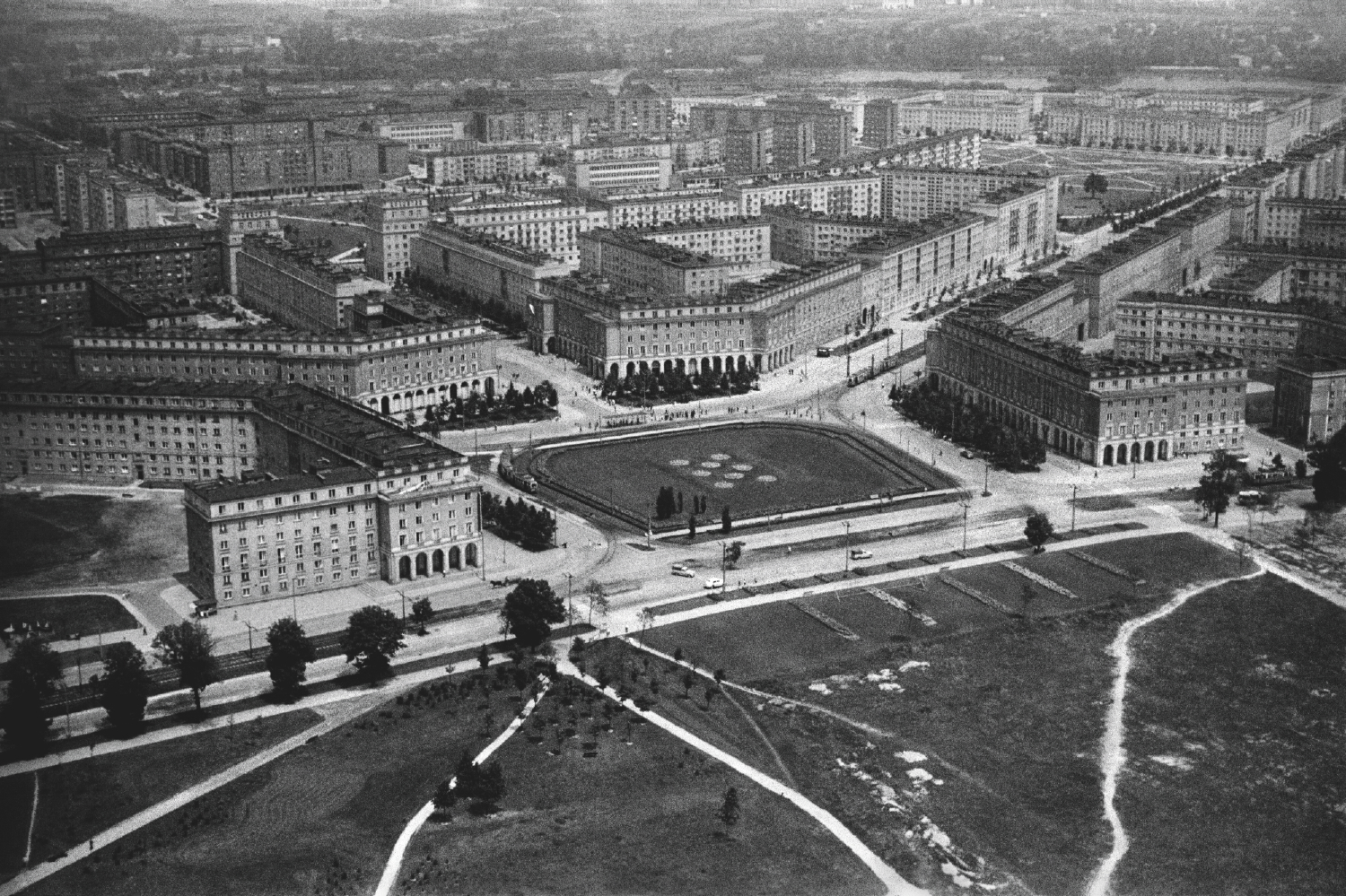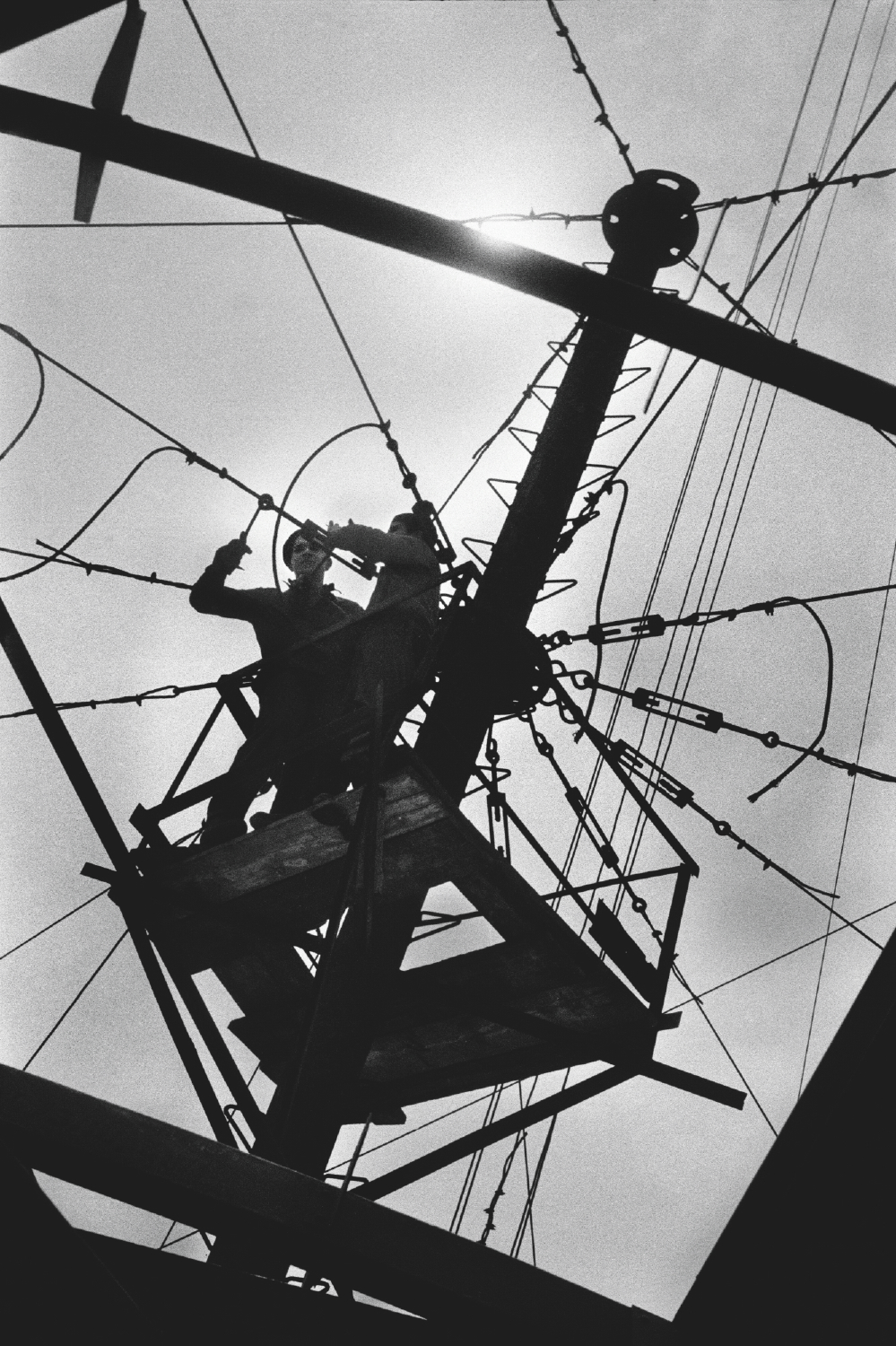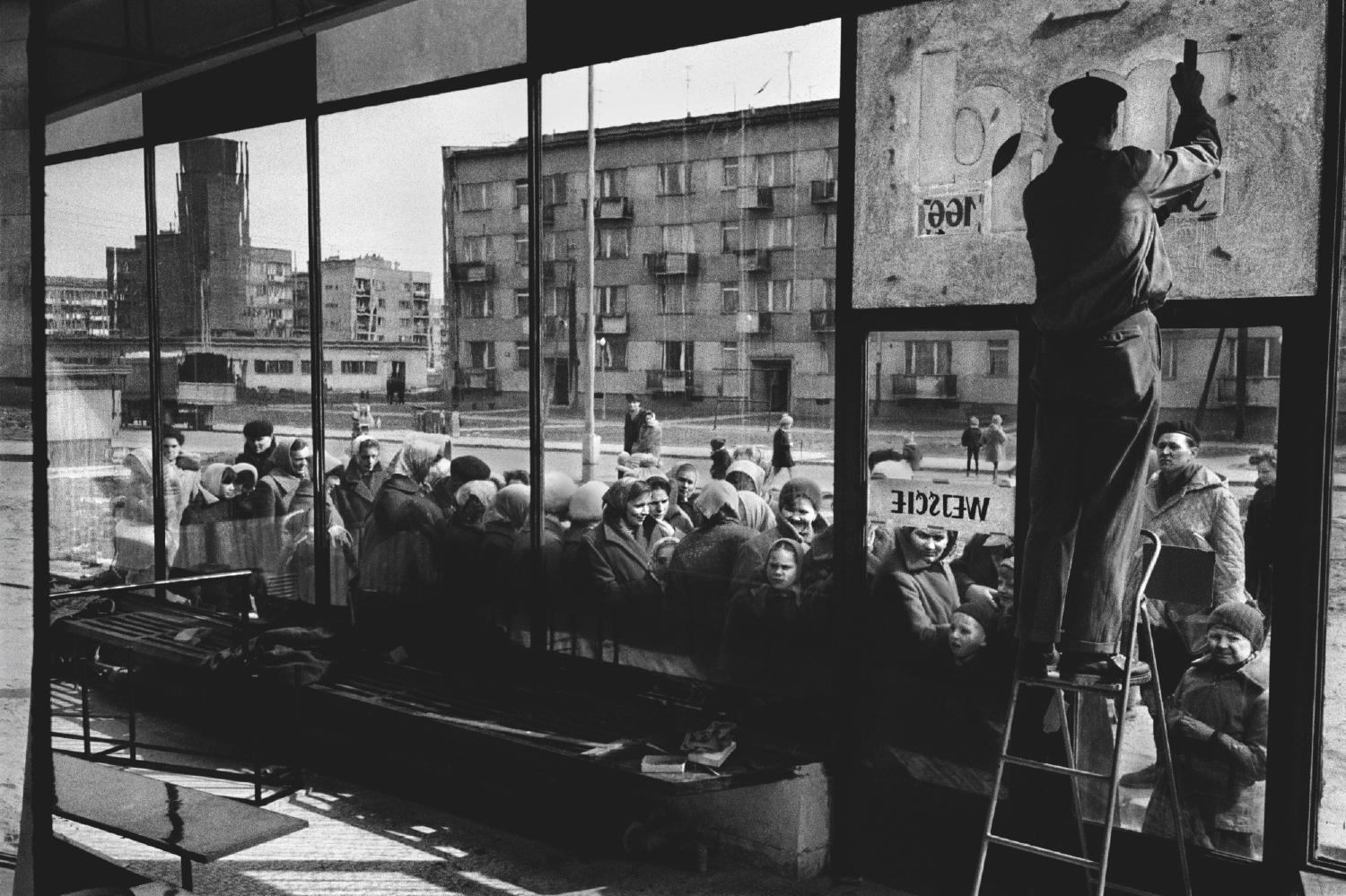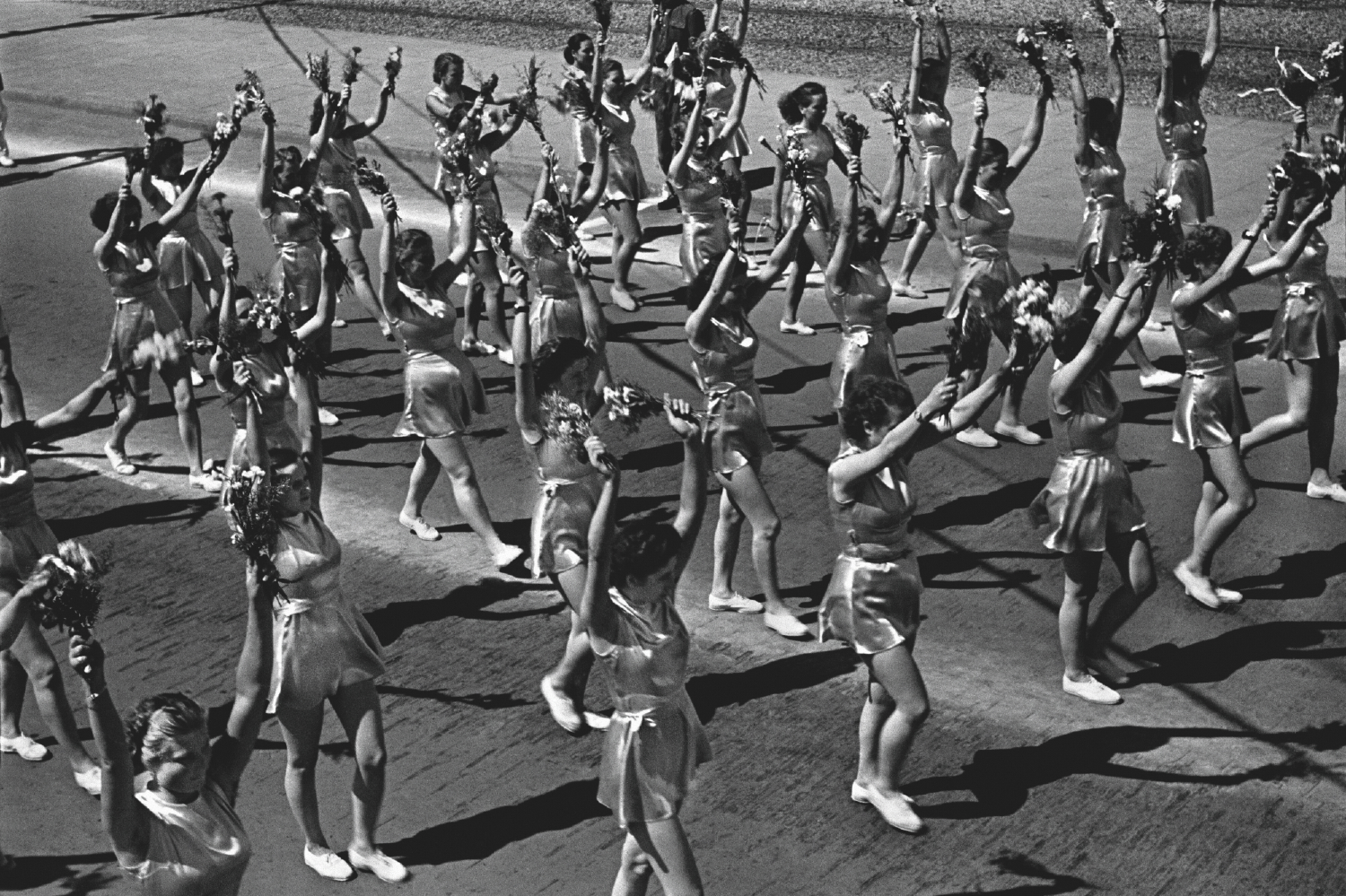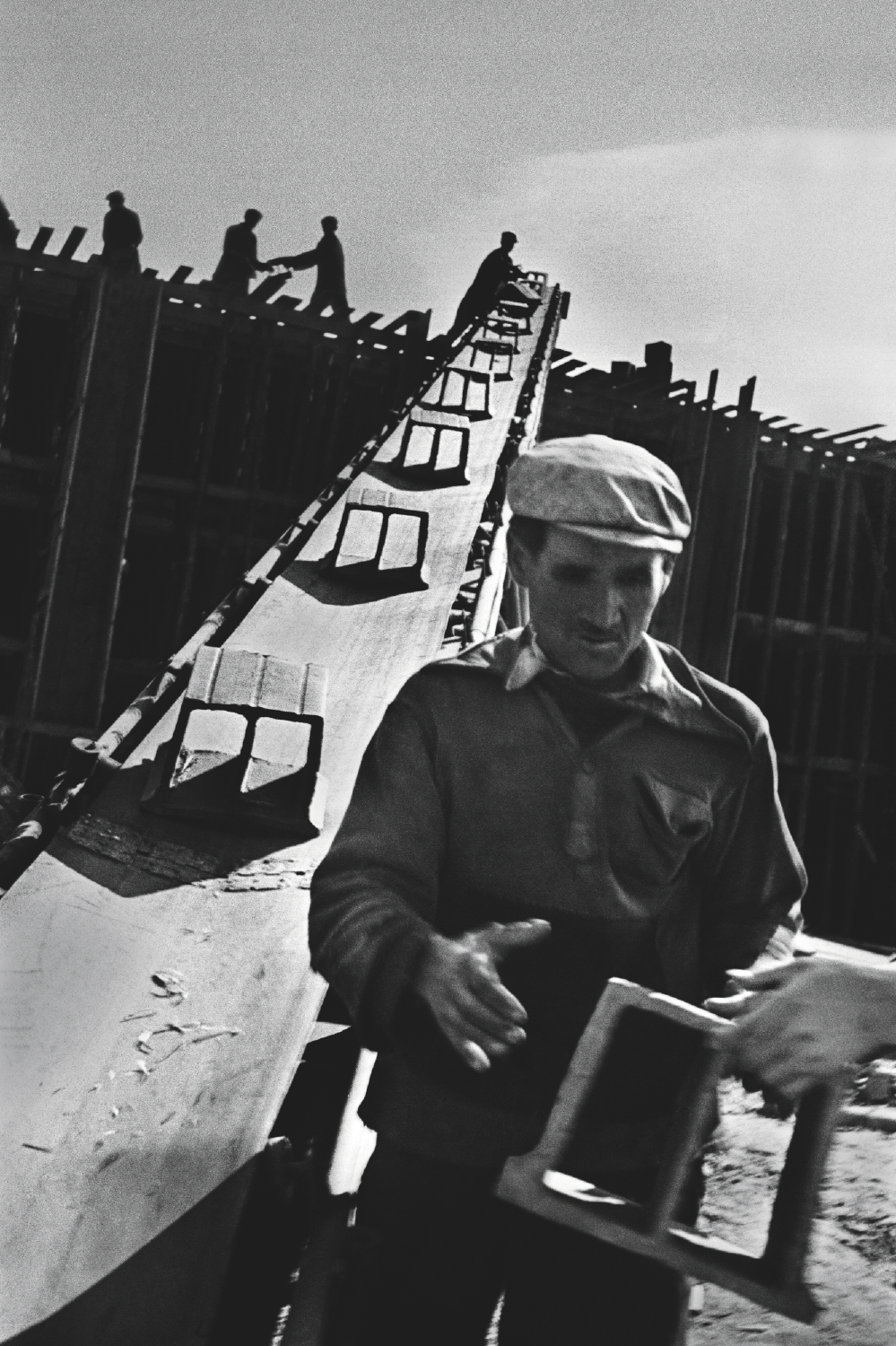IN PHOTOGRAPHS
Nowa Huta in Henryk Makarewicz and Wiktor Pental’s Photographs
The project entitled Ideal City takes place at two levels. The first involves preserving the archive, while the second is focused on interdisciplinary exploration of the work of two eminent photographers: Henryk Makarewicz and Wiktor Pental, who recorded the emergence and development of the phenomenon known as Nowa Huta, a satellite town for a gigantic industrial enterprise – a metallurgical combine. From a photographic perspective, most images can be seen as a reflection of the scope of authorial methods in search of modern means of expression, best suited to the aura of dynamic contemporaneity.
For photographers in the 19 th century the photographic camera constituted a perfect tool of creating a conventional picture of the city. The majority of images were commercial commissions supposed to match specific expectations stemming from the contemporary concept of the city, manifested in architecture. Its photographic depictions were mere confirmation of a certain order expressed by established social order, and the elements of architecture that mirrored it, including churches, palaces, public buildings, as well as representative squares and streets. A catalogue of painstakingly selected motifs coexisted harmoniously with triumphalism of monumental aesthetics demonstrating the dominance of power.
However, more and more cracks began to emerge on the monolithic image of the photographed city, causing irrevocable disturbance to the heretofore untouchable classifications of urban space. Atget’s unique combination of the past and the present in his photographs of Paris, or Abbot’s attempts at deconstructing meanings within the space of New York brought a new quality in the way cities were photographed. Transformations occurring at social and cultural levels diverted attention away from traditional urban iconography. Ambitious and creative photographers gradually quit providing a simple description of urban life for the benefit of interpreting it in an individual way, and decoding its various meanings. Pictures taken by Evans in the 1930s provide a good instance of modern tendencies. Evans was among the first to believe that the broadest possible social and environmental context should be adopted when photographing a city, to highlight the unexpected and equivocal nature of contexts in which humans function. Modern photographic strategies were further developed due to interest – growing more intense after the Second World War – in the fragmentariness, reflections, illusions, and contrasts present in cityscape, components of the ambiguous human habitat. Urban development as well as social andpolitical changes contributed to the progress of the trend of humanist photography in Europe, made popular mostly by the work of Cartier-Bresson and other Magnum photographers. Images of Nowa Huta taken by Pental and Makarewicz unite all the mentioned phenomena typical of progressive humanist photography, a product of careful observation, technical skill, historical awareness, and the modern attitude of the creators. Referring to the idea of city-text, one could describe old photos of cities as complete or self-contained, while the radically different images of Nowa Huta contribute to the formation of the environment of modern people, constituting an open text, inviting consecutive interpretations, and readings.
Unlike their predecessors, Pental and Makarewicz reject the hierarchy of motifs or technical rules, and adopt a participant observation approach to reality, consistent with the premises of modern American photography. The spirit of experimentation is, for instance, detectable in the way they apply chiaroscuro to intensify the dynamics of expression, dramatic impact, and depth, testifying to authentic involvement, or momentary tension. This surprising method of
constructing photographic narratives is also visible in how they operate convention when depicting people, and their surroundings. As a consequence, the photographs from Nowa Huta differ from monumental raw poster-like images following the rules laid down by propagators of the system. On the contrary, seen from today’s perspective they offer a mixture of motifs, characters, scenes, and cityscapes that inspired awe at their authenticity and topicality. In an
unerring way that confirms the universal potential of the medium, images depicting labour, fun, or rest, with accompanying cityscapes, form subsequent narratives revolving around humans, and their lives. Interestingly enough, most of the photographs fail to simply demonstrate the toughness of post-war life. It must have been a challenging task to provide an unobvious depiction of a labourer as a hero overcoming his own weakness, and the resistance of matter. But it is exactly because of their ambiguity, timelessness, frequent usage of humour and a sense of distance towards reality, as well as bitter irony detectable in some of the photographic images, that Pental and Makarewicz’s negatives reach beyond their time, entering into the history of photography, as well as the world around us – a conglomerate of history and modernity, old and contemporary experience. The awareness of photography’s potential to identify reality, and interpret the meanings it contains is common nowadays, but the reconstructive potential of the photographs of Nowa Huta is surprising, both in terms of documentation showing the importance of the past, and in terms of aesthetics, or a tool of political critique. Attention to change and novelty seen in numerous of those pictures, to the dynamics of real life can be related to invariably significant elements of urban changes, and – in a broader perspective – also civilizational ones.
The point of photographic narrative here is observation of indefinite events, minor details, or meaningless facts, as well as anonymous figures, and places that are hardly noticeable. Yet first of all, the photographers record events, and their universal discursive potential. For instance, some thoughts related to the analysis of photographic events may relate to phenomena described as migration, great expectations they arouse, and conflicts generated by the scale of present movements of people. Some thoughts may be associated with a critical view of history, for instance the effect of industry on nature, or results of disappearing traditional social and cultural structures, gradually annihilated by rampant industrialisation.
Reflection on the photographic archive of Pental and Makarewicz provides room not only for interpreting history, but also for identifying contemporary significance of the medium, depending mostly on its ability to provoke social change, proportional to narrative potential. The impact of Pental and Makarewicz’s pictures comes from logical and structural coherence possible due to humble and purposeful composition. In many of the images from the Nowa Huta archive there is cumulated energy generated by transformations of reality, which can be seen in representations of single episodes as well as in complex social processes. Photographs are like an explosion, or illumination taking place in the real world which they change by injecting new meanings into it. They cannot be read straight away, but it is because of them that photographs infused with intense narrative are capable of constantly renewing space for multi-layered interpretations. This is the potential of the images of Nowa Huta which – by their logical and transparent semantic nature provide a departure point for imagination, refreshing old narratives, and constructing new stories dedicated to deconstruction of history as well as construction of the future.
Marek Janczyk


